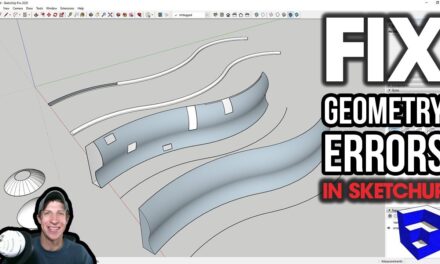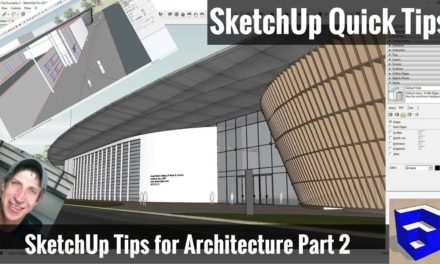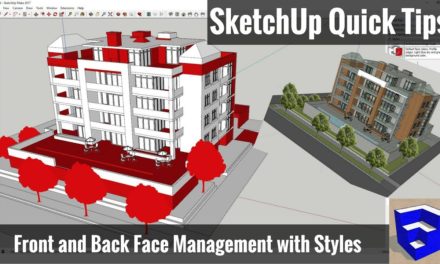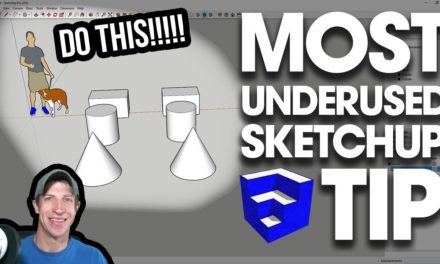FRONT AND BACK SIDES OF FACES in SketchUp and Why They Matter
In this video, we talk about the importance of using the front and back sides of faces in SketchUp. Face orientation affects rendering, 3D printing, and more!
Do you like these SketchUp tutorials and videos?
If so, please consider supporting me on Patreon (click here to support) or by visiting my Support the Show Page!
THE SKETCHUP ESSENTIALS COURSE
http://www.thesketchupessentials.com/course
Why do I reverse the faces in my model?
I’ve gotten this question several times in the past couple weeks, and I wanted to address it really quick in a video.
- As most of you know, SketchUp faces have a front side and a back side. Because SketchUp is a face modeler (meaning it creates all of its geometry as faces) instead of a solid modeler, it needs to keep track of which face is the front side and which face is the back side of each face.
This is important for a couple different reasons – the first is rendering programs. While all rendering programs are a bit different, in general they work better with front faces than back faces. Some rendering programs are set to ignore back faces in order to increase performance (avoid rendering faces you’re not meant to see). - For example, let’s say I was to apply a brick material within Vray to these two cubes. You can see that since these materials have a bump map applied to them, they react in 2 very different ways. In the first box, the bump moves towards the camera. However, in the second instance, because the back side faces are towards the camera, the bump map goes in the opposite direction, making for a very unrealistic material.
- In addition (and some of this depends on your settings), if you were to apply an emissive material to this face, your material might only emit in one direction (the direction that the front face is facing).
- Outside of rendering, the orientation of your faces is important as well, especially if you’re exporting for 3D printing. Basically, these formats, like STL, need to know what faces are inside and what faces are outside so that things are 3D printed properly.
- If you’re modeling only to use items in SketchUp, never exporting, and never rendering, this may not be a big deal for you. However, if there’s a chance that you’re ever going to export or use your objects in a usage other than just viewing in SketchUp, it’s a really good idea for you to always have your front faces facing the camera.
Couple tips for doing this.
- First – how to switch the faces. One way to do this is to right click on each individual face and select “Reverse Faces.” This will swap the front face and back face orientation. This is probably the easiest way if you only have to swap a few different faces.
- Second – If you have a lot of faces that are facing the wrong direction within an object, you can find a face that’s facing in the right direction, right click on it, and select the option for orient faces. SketchUp will use the orientation of that face to figure out the orientation of the other faces in the object and adjust them to match.
- Third, visibility. Some people have a bit of trouble seeing the difference between the gray and the white depending on the angle. What you can do is set up a style where the back faces are a bright, hard to miss color, and select the “Shaded using all same” option. Now, anywhere in my model where I have back side faces, I can see them and go in and reverse them.
- Finally, if you have a really complex shape that you’re trying to set up as a solid for 3D printing, the extension solid inspector will highlight and fix the wrong faces for you in many cases.
That’s where I’m going to wrap up today’s video.
About Justin Geis
Hi, I'm Justin Geis, and I'm the founder of The SketchUp Essentials. I started using SketchUp as part of my work as a general contractor in 2008. I quickly realized the power of the software and started using it for personal projects. I started The SketchUp Essentials as a place to share easy to follow SketchUp tutorials and tips to help everyone harness the power of 3D Modeling in their lives. When not working with SketchUp, I enjoy playing soccer and spending time with my wife and our two dogs.




